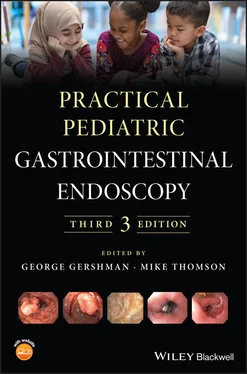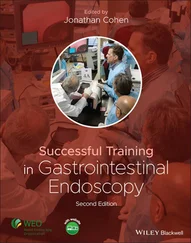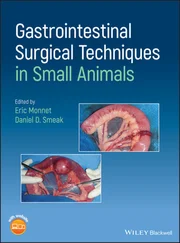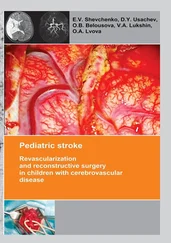A work area for physicians is an important consideration so endoscopists can complete procedure notes, enter patient orders, and coordinate care by phone. Including a room for consultation with patients and families to allow for confidential conversations is also important [1].
A major decision that must be made is where endoscopes will be stored and reprocessed between cases. Ideally, reprocessing is most efficient when it can be located directly adjacent to and shared with the other procedure rooms. Contaminated endoscopes have been linked to many outbreaks of device‐related nosocomial infections. There have also been outbreaks recently related to the elevator mechanism of the duodenoscope [5]. Endoscopy staff should be well trained in disinfection procedures and skills should be annually assessed. Flexible GI endoscopes should first be comprehensively cleaned manually and then subjected to at least high‐level disinfection (HLD). HLD can be performed in an automated endoscope reprocessor or using manual processes. Step‐by‐step guidelines on appropriate scope disinfection can be found in the multi‐society guidelines originally published in 2011 [6] and updated in 2016 [7]. An understanding of how a specific reprocessor might be integrated into a unit under design is critical to avoiding last‐minute space refitting, as well as potential breaches in patient safety once procedures are being performed.
When preparing plans for construction of the endoscopy unit, thorough discussion should take place with the hospital system facility management or a licensed architect familiar with healthcare facilities. The coding of these facilities will vary from state to state and country to country. To prevent future problems, the architect and licensing agencies should be consulted regarding all possible uses of the unit, as regulations vary depending on the use of the unit. Attention to these possibilities may prevent the possibility of retrofitting after the unit is already built.
The Society of Gastroenterology Nurses and Associates (SGNA) has published guidelines suggesting the minimum number of qualified personnel who should be allocated to various positions during endoscopic procedures [8]. Running a cost‐effective and safe endoscopic practice is a balance between appropriate staffing and the expense of maintaining that staff. Determining the number of staff needed to run the endoscopy unit is dependent on several factors. These include availability of equipment, time, types of procedures, complexity of patients, and presence of trainees. Maintenance of certification and licensing of endoscopy nurses are state specific in the United States ( http://ce.nurse.com/RState Reqmnt.aspx). It would be prudent for the endoscopy unit to have annual assessments and training set up for all employees. A recent survey of pediatric centers suggests that more than 70% use an endoscopy RN and an endoscopy technician in the room during the performance of each procedure, and 100% use dedicated anesthesia staff [1].
Plans for after‐hours coverage should be determined for weekend and after‐hours emergencies. Based on a recent survey [1], 66% of US centers currently have a system in which a GI technician, a GI RN, or both are available on call. On‐call staff should be cross‐trained so that they can function well in all areas of the procedure. In some centers, general operating room staff assist with emergent after‐hours cases. These staff may not be trained in endoscopic procedures. Assigning a unit director is important in ensuring a focus on process improvement activities, and ensuring that equipment and services remain competitive.
It is important to recognize that an endoscopy unit should not target 100% efficiency, as this will lead to scheduling conflicts and decreased patient satisfaction. Instead, standard efficiency rates should be considered to be 70–85% [9]. The unit may have a dual purpose of serving both inpatient and outpatient populations, as opposed to an outpatient endoscopy center. It should therefore provide easy access to both types of populations. Optimizing turnover time should be a target for quality improvement initiatives as it impacts unit productivity. Patient no‐show may be an important barrier to improved efficiency. Preprocedure interventions have been shown to be effective in decreasing the no‐show rate [10]. On‐time starts and decreased turnover time can help maximize room efficiency [11]. Patient satisfaction surveys should be used as an indicator of quality of service. A recent study on patient experience in pediatric endoscopy identified important aspects from the patient and family perspective [12].
Documentation is an important aspect of endoscopy unit management. There are three broad areas of documentation: nursing documentation before and after procedure, the procedure itself, and sedation record. The Joint Commission on Accreditation of Healthcare Organizations provides guidance on components of documentation.
Pediatric patients often have limitations in therapy due to size and approved measures. Endoscopic equipment can be purchased used or new or leased for a predetermined amount of time.
Purchasing or leasing endoscopy equipment represents a significant capital budget item for any setting in which pediatric endoscopy will be performed. Fewer endoscopes may be necessary to run concurrent rooms in smaller centers, compared with larger centers that feature more endoscopists and more endoscopy rooms. There are no data to guide how many scopes should be on hand at any endoscopy unit. To maximize efficiency, one light source and processor should be available per endoscopy room and one scope reprocessor allocated for each 1000 procedures per year. For adult units, one colonoscope and gastroscope per 350 procedures per year has been suggested as ideal [4], but this general recommendation may not apply to pediatric endoscopy in which there may be a need for endoscopes of various diameters and sizes to accommodate infants and children. The frequency of endoscope upgrades is also a major factor in determining how many endoscopes should be purchased. In a recent survey, most centers reported replacing the endoscopes every 6–7 years [1].
An ideal endoscopy unit offers diagnostic endoscopy, including capsule endoscopy, small bowel enteroscopy, pH impedance testing, and motility testing. Therapeutic endoscopy should be available at pediatric centers or offered by an adult gastroenterologist in the area. If trained endoscopy staff are not always available to participate in emergent cases, having specific toolkits such as a bleeding or foreign body removal kit can ensure that correct endoscopic accessories are available.
Well‐designed pediatric gastrointestinal endoscopy units are critical to the effective diagnosis and management of gastrointestinal disorders in children. A thoughtful approach to the design, management, and necessary equipment for the unit is essential.
See companion website for videos relating to this chapter topic: www.wiley.com/go/gershman3e
1 1 Lerner DG, Pall H. Setting up the pediatric endoscopy unit. Gastrointest Endosc Clin North Am 2016, 26(1), 1–12.
2 2 Pall H, Lerner D, Khlevner J, et al. Developing the pediatric gastrointestinal endoscopy unit: a clinical report by the Endoscopy and Procedures Committee. J Pediatr Gastroenterol Nutr 2016, 63(2), 295–306.
3 3 Beilenhoff U, Neumann CS. Quality assurance in endoscopy nursing. Best Pract Res Clin Gastroenterol 2011, 25(3), 371–385.
4 4 Petersen B, Ott B. Design and management of gastrointestinal endoscopy units. In: Cotton P (ed.). Advanced Digestive Endoscopy: Practice and Safety. Blackwell, Oxford, 2008, pp. 3–32.
Читать дальше









